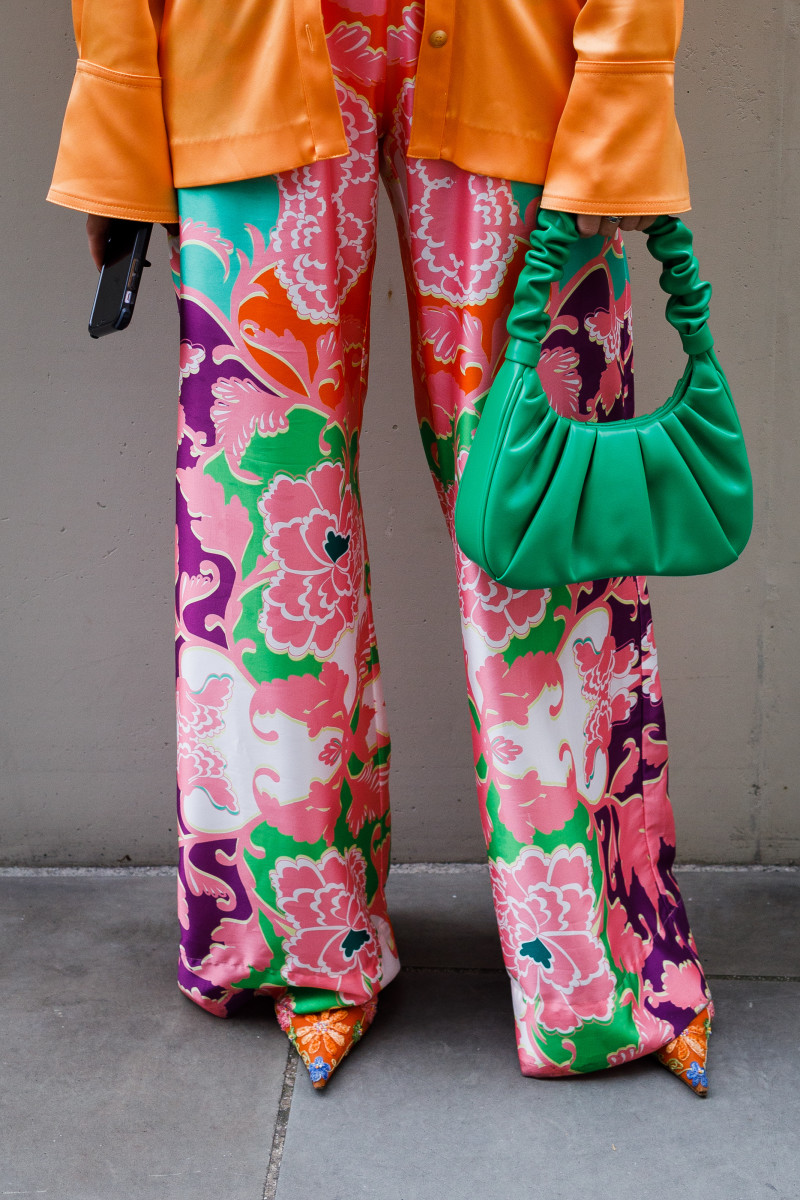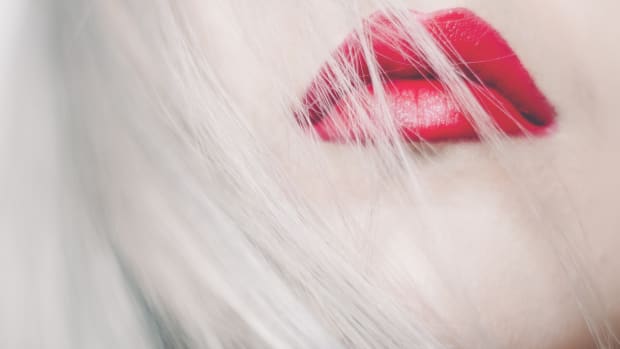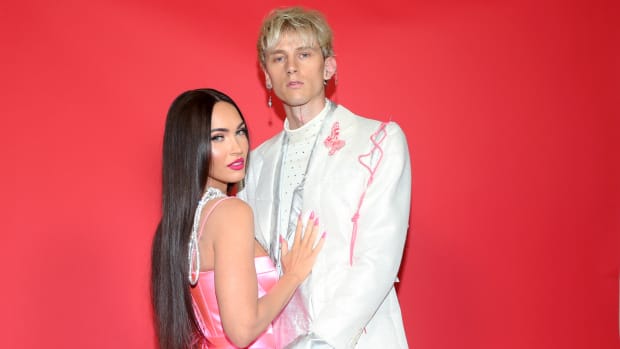Even at a time when no one was leaving the house, when paparazzi images of celebrities were scarce, when shopping trends were flipped on their heads and the industry was clouded
by uncertainty, fashion still managed to churn out a handful of pieces that seemed to be everywhere — even if "everywhere" meant the social media feeds keeping us company in self-isolation.
One such inescapable item was J.W. Pei's Gabbi, a vegan leather shoulder bag distinguishable by its scrunchie handle, bold color and $89 price tag. You might've seen it on the arms of Emily Ratajkowski, Gigi Hadid, Irina Shayk, Charli and Dixie D'Amelio, or any number of influencers, editors or stylish people on the street over or on your timelines the past year and a half.
The Hong Kong- and Los Angeles-based accessories brand was founded in 2017 by husband-and-wife duo Steph Li and Yang Pei, but it had its first real, runaway hit during the most unlikely, difficult period for small businesses.

Spotted at pretty much every fashion week since 2020: J.W. Pei's Gabbi.
Photo: Tristan Fewings/Getty Images
The story begins in early 2020. The Gabbi was actually born out of the success of a different style — the Eva, a minimal shoulder bag with a curved bottom that comes in an array of colors, textures and prints. "We had the Eva going really strong, and we wanted something that can go into fall and winter, because the Eva is very summery," Li says. "Since I was into the '90s, scrunchies and that kind of stuff, I was like, 'Why don't we put that into the handle part of the bag?'" The popularity of Bottega Veneta's Cloud bag and other styles in the market made her and the team feel confident in its potential.
J.W. Pei introduced the Gabbi in February 2020. That same month, House Of, the brand's public relations agency of record, hosted a tastemaker event for editors, stylists and influencers, where they could either borrow or take home pieces from a variety of brands for New York Fashion Week; among them was the Gabbi.
"We laid them all out on a white muslin with little cherry blossom petals — that made it a really colorful flat lay, and everybody was taking pictures from above because it was such a cute, simple setup," Christina Tung, founder of House Of, tells me. "It really was a centerpiece that season, when people were coming through. It was really colorful. They looked like candy on the table. It was just such an easy Instagram moment."
House Of had started this gifting suite the previous year "with no expectations," but it had massive returns when street-style images from the season came back, according to Tung: "The editors and the fashion insiders are really your influencer's influencer, so we really felt that's where to start with creating a trickle-down effect. It was really cool just to see all the different ways the editors and stylists were styling the Gabbi and incorporating it into their outfits in so many different ways — more casual, more dressed up, more formal... It was a really great moment for us, like, 'We're maybe onto something. If all the editors and stylists and influencers can incorporate this bag into a myriad of looks, this is just a microcosm of what is possible in the world at large.'"
That fashion month season led to lots of interest in the bag and in J.W. Pei more broadly. Then, of course, the world went into lockdown because of Covid-19 — but that didn't necessarily slow the brand down. If anything, J.W. Pei fit the profile of the types of brands people were able and looking to shop: online-first, direct-to-consumer, under $100. Plus, J.W. Pei was investing in digital marketing and social ad campaigns, which brought more eyeballs to the product. "If you were on the right algorithm, you couldn't miss this bag," Tung says. "It was a burgeoning 'it' bag."
However, both Li and Tung agree that the Gabbi didn't reach its peak until the celebrity sightings started rolling in en masse in 2021.
"If you look at our business, since the beginning of 2020, we've grown by almost 10 times," Li says. "Part of it is, of course, the pandemic; the second part is how the celebrities are starting to pick up on Gabbi."
The bag had already received some buzz among VIPs at that point — Shayk had been photographed with the black version in April 2021, and Ratajkowski was spotted with it five different times, in three different colors, in the span of a month. Then, Hailey Bieber wore it during a highly-publicized trip to Paris; that's when celebrity really started to push the needle. By June 2021, the Gabbi made up 50% of J.W. Pei's total sales. (Some more perspective on the impact of celebrity: When Megan Fox wore it during New York Fashion Week in September and InStyle wrote it up, Li says the brand sold over a thousand Gabbis.)
As Li describes it, it was a perfect storm that allowed this to happen: The Gabbi fit into the ever-relevant nostalgia trend, it was relatively affordable, and it had the endorsement of some pretty big names. And by that point, there were a myriad colors to pick from: the original ivory, brown and orange; the purple, butter, beer and icy blue from the Summer 2020 collection; the grass green, black and bubblegum pink from Spring 2021. (The brand has since introduced a darker blue, a coral pink and a chili red for autumn.)
Recommended Articles
"I never really expected it to go as well as what it's been, because it's simple, but it goes with everything — it's very chic," Li says. "We get a lot of comments saying, 'Oh, I didn't expect the quality to be so good. When you touch it, it feels like leather. It's so soft. We don't believe it's $100.'"
The success of the Gabbi has been so powerful, it's had the brand rethinking the whole business. "We've always been a direct-to-customer brand, so we never really wanted to explore wholesale, but after fashion week, all these big ones reached out, really interested in Gabbi," Li says.
One of its first retail partners was Amazon, a platform that Li remembers being cautioned about: "A lot of people were telling us, 'It's not a good distribution channel for a fashion brand.' But we did anyway, and it worked out really well for us. Within like three months, the Gabbi was one of the top sellers within the category."
Most of J.W. Pei's sales, though, are still from its own e-commerce, she says. The brand is able to keep up with demand — and adjust for, say, a larger interest in a specific Gabbi colorway — because it owns the factory it manufactures in, meaning it has control over inventory and distribution channels.
Initially, Li wasn't betting on the Gabbi to be the brand's big launch. There was another style in that collection, a lantern-style bag, that she was sure would be a hit. "It's very unique, it has an Asian element to it," she says. "That's what we've been trying to do, put our Asian heritage into the design. I thought that one would go viral, but it didn't."
Beyond being a consistent generator of celebrity-adjacent press clips, the Gabbi also frequently brings customers back to the brand. "The Eva bag buyers, they all come back to get Gabbis," Li says. "What we're seeing now is that more than 60% of customers buy more than two colors of the Gabbi... We get a lot of emails like, 'Are you going to do something with Gabbi? A bigger size or a crossbody version?'" It's certainly something she and her team are thinking about.
"One of the dilemmas I constantly talk to Christina about is: Should we stick with the Gabbi and just come out with more colors and different sizes? Or should we just let it be one of the classics and move onto new styles?," Li asks. "Right now, since people are still in love with it, my perspective is that we should take some of the elements from the Gabbi and make it into a whole collection, whether it's a bigger size or even a shoe with that scrunchy element. That would be really fun."
That's way down the line, though. In the shorter-term, J.W. Pei is toying with new riffs of the Gabbi, maybe using different fabrics for different seasons (knit for fall, tweed for summer) or releasing a crossbody version or one with a wider shoulder strap. The brand actually just dropped a Super Mini Gabbi — think of it as J.W. Pei's Le Chiquito (according to the website, fits a "7cm lipstick") — consider it a glimpse at what might be in the future.
"It's still a very signature-looking bag," Tung says. "People recognize it as J.W. Pei, if you saw that handle on a strap or a crossbody or a longer drop-shoulder bag or a tote bag. It's a design detail that they now have ownership of. I think that for J.W. Pei, it's a great move, to build that out to a few different styles."
When it comes to longevity, Li often finds herself looking to her role model in the industry, the Bulgarian accessories label By Far, for inspiration. "Its Rachel bag has been doing so well for years. How do you make sure it still works? To be honest, I don't know," she says. "Our way to solve the problem right now is to come up with a whole collection with that Gabbi element to it, whether it's the scrunchy or the simplicity to it. We'll have to still try out to see if the market reacts well to it."
Please note: Occasionally, we use affiliate links on our site. This in no way affects our editorial decision-making.
Never miss the latest fashion industry news. Sign up for the Fashionista daily newsletter.





